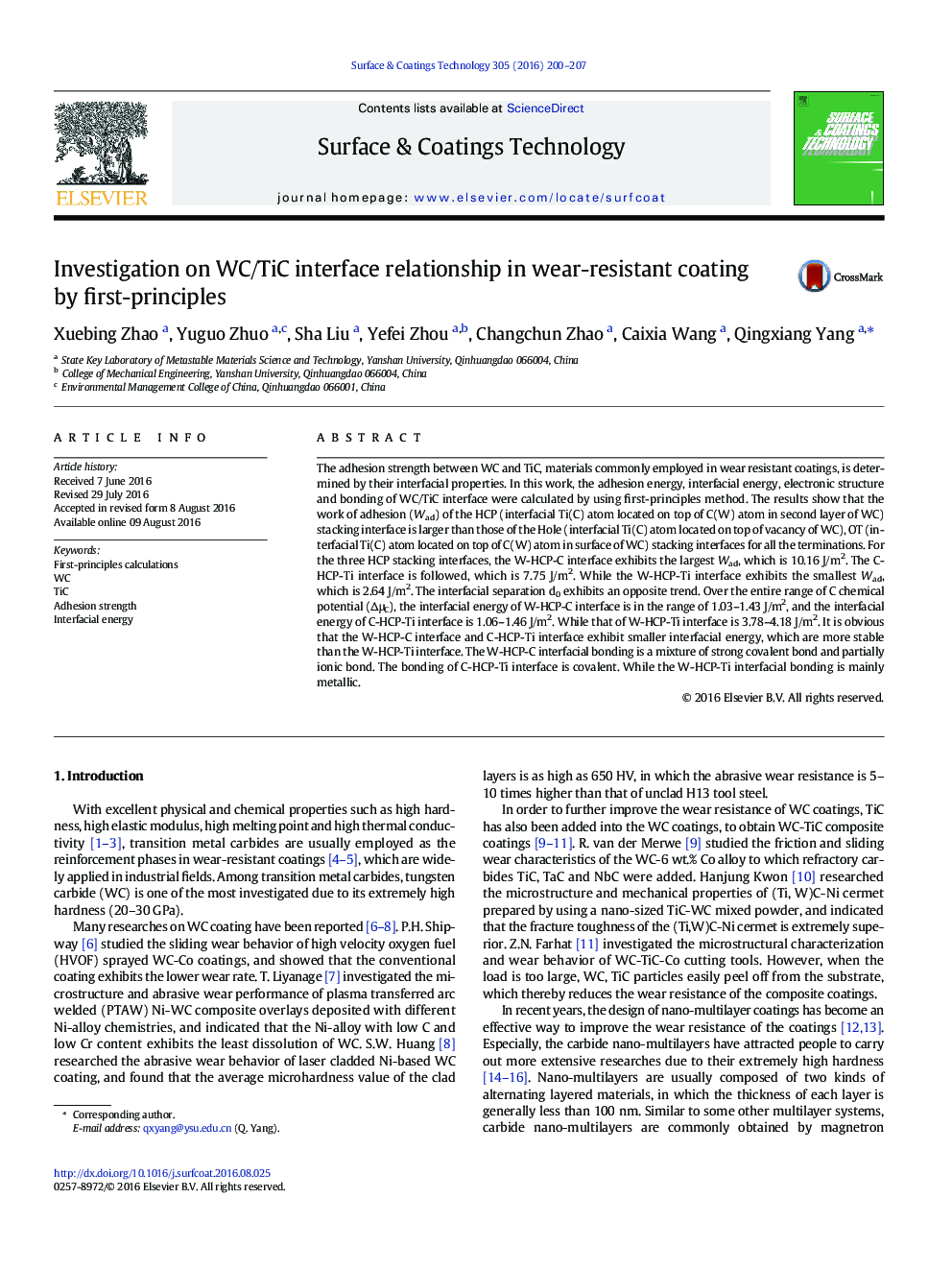| کد مقاله | کد نشریه | سال انتشار | مقاله انگلیسی | نسخه تمام متن |
|---|---|---|---|---|
| 1656231 | 1517575 | 2016 | 8 صفحه PDF | دانلود رایگان |

• The interfacial properties including adhesion strength and interface stability of WC/TiC coating were investigated by first principles at the first time.
• The HCP stacking interface exhibits the larger work of adhesion (Wad) than the Hole, OT stacking interfaces.
• The W-HCP-C interface exhibits the largest adhesion strength, and the C-HCP-Ti interface is followed. The W-HCP-C interface and C-HCP-Ti interface are more stable than the W-HCP-Ti interface.
The adhesion strength between WC and TiC, materials commonly employed in wear resistant coatings, is determined by their interfacial properties. In this work, the adhesion energy, interfacial energy, electronic structure and bonding of WC/TiC interface were calculated by using first-principles method. The results show that the work of adhesion (Wad) of the HCP (interfacial Ti(C) atom located on top of C(W) atom in second layer of WC) stacking interface is larger than those of the Hole (interfacial Ti(C) atom located on top of vacancy of WC), OT (interfacial Ti(C) atom located on top of C(W) atom in surface of WC) stacking interfaces for all the terminations. For the three HCP stacking interfaces, the W-HCP-C interface exhibits the largest Wad, which is 10.16 J/m2. The C-HCP-Ti interface is followed, which is 7.75 J/m2. While the W-HCP-Ti interface exhibits the smallest Wad, which is 2.64 J/m2. The interfacial separation d0 exhibits an opposite trend. Over the entire range of C chemical potential (ΔμC), the interfacial energy of W-HCP-C interface is in the range of 1.03–1.43 J/m2, and the interfacial energy of C-HCP-Ti interface is 1.06–1.46 J/m2. While that of W-HCP-Ti interface is 3.78–4.18 J/m2. It is obvious that the W-HCP-C interface and C-HCP-Ti interface exhibit smaller interfacial energy, which are more stable than the W-HCP-Ti interface. The W-HCP-C interfacial bonding is a mixture of strong covalent bond and partially ionic bond. The bonding of C-HCP-Ti interface is covalent. While the W-HCP-Ti interfacial bonding is mainly metallic.
Figure optionsDownload high-quality image (122 K)Download as PowerPoint slide
Journal: Surface and Coatings Technology - Volume 305, 15 November 2016, Pages 200–207